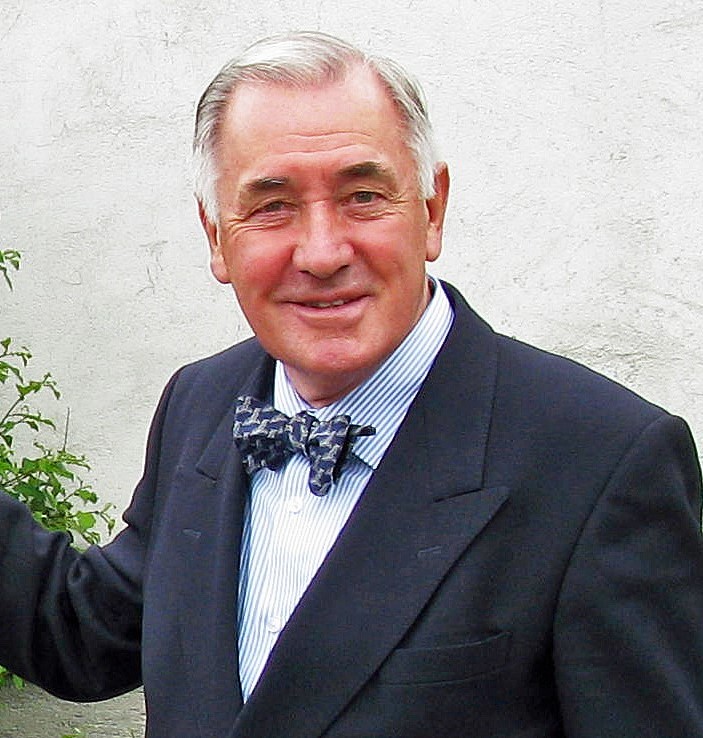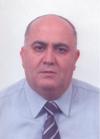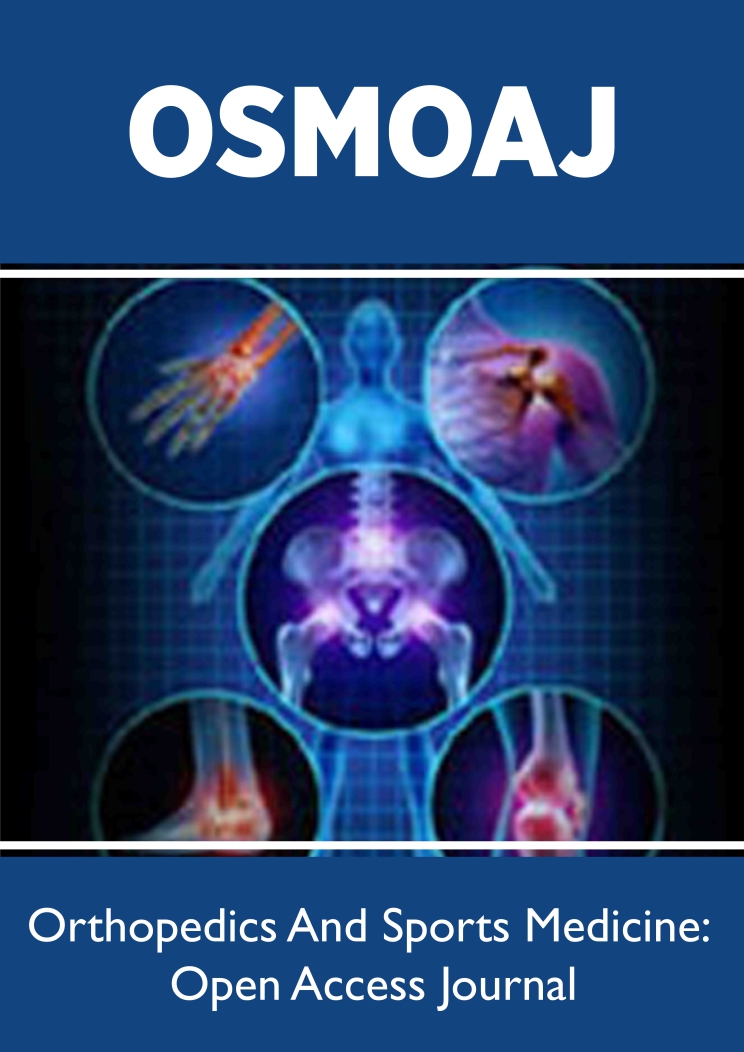
Lupine Publishers Group
Lupine Publishers
Menu
ISSN: 2638-6003
Research Article(ISSN: 2638-6003) 
The Negative Effects of Intense Frequent Steady State Aerobic Training: A Mini Review Volume 6 - Issue 3
Thomas Mboya Kisaka*
- Department of Recreation and Sport Management, Faculty of Hospitality, Tourism and Leisure Studies, Kenyatta University, Kenya
Received:February 13, 2023; Published:September 5, 2023
Corresponding author:Thomas Mboya Kisaka, Department of Recreation and Sport Management, Faculty of Hospitality, Tourism and Leisure Studies, Kenyatta University, Kenya
DOI: 10.32474/OSMOAJ.2023.06.000241
Abstract
Exercise has been emphasized to be a need for all humans. Being physically active has many benefits ranging from minimizing risk factors for diseases, keeping the body strong, anti-depressant, anti-stress and anti- anxiety effect. The exercises are usually in two categories: cardiovascular and resistance. Cardiovascular training otherwise called aerobic training has been an interest to many scholars with majority dwelling on the mode of High Intensity Interval Training. This does not mean that steady state aerobic training is not essential to achieve health benefits. If not properly applied, the latter has some negative effects to the subject. Little research has been done on shortcomings of steady state aerobic training, and this is the concern of this mini review. Further research is required to settle the debate of the frequency and intensity of steady state aerobic training that causes negative effects to the exerciser.
Definition of Steady State Aerobic Training
Steady State Aerobic Training (SSAT) is a type of cardiorespiratory training that entails the doing of continuous aerobic exercise at a fixed pace or percentage of VO2 Max for a period of time [1]. This definition has guided the writing of this paper. Cardiovascular endurance or aerobic exercises include inline skating, running, swimming, jogging, walking, cycling and dancing. From the foregoing definition, these activities qualify to be steady state cardio if done at a fixed pace for a certain period of time.
Benefits of Steady State Cardio
The need for exercise by all humans cannot be overemphasized. According to [2] Global Wellness Institute (2019), human beings are born to move. The agility, strength and speed of human bodies have been part of human existence and survival for millennia, from hunters and gatherers societies to agricultural and nomadic societies. The benefits of engaging in steady state cardio have been well documented. SSAT improves cardiovascular health and the function of the vascular system [1]. Physical activity improves erectile function in men [3]. Further, it improves risk factors of Erectile Dysfunction such as insulin resistance and hypertension. [4] report that running for at least 5 to 10 minutes daily is associated with reduced risk of death from all causes and from cardiovascular diseases. Moreover, cardiovascular exercise results in better blood flow, increased performance, endurance and stamina, and improved insulin sensitivity [5].
Negative Effects of Steady State Cardio
Although steady state cardio has benefits, it can also have negative effects to the exerciser. To date, few studies have been done regarding this subject. Majority of scholars have dwelt on High Intensity Interval Training (HIIT) research; on why HIIT is the best form of training, and comparing it with steady state cardio. In this review, the focus is on people who engage in SSAT as their major form of training, without involving resistance or HIIT training. Just as with any exercise, long durations and high intensity of SSAT could result in increase in the levels of circulating cortisol in the human body [6]. Increase in cortisol is closely linked to high intensity exercisers. [6] further assert that cortisol has an opposite effect to testosterone, insulin and growth hormone. Moreover, increased cortisol levels decompose muscle tissue and causes the muscle to suffer from sarcopenia. This glucocorticoid hormone is secreted by the adrenal gland in response to physiological, psychological and physical stressors [7]. However, argue that the specific duration and intensity of exercise required to increase cortisol levels in the human body, differs with the individual. In terms of the exercise load, low intensity exercise does not contribute significant increase in cortisol. The repetitive nature of steady state cardiovascular exercise increases the likelihood of injuries. These are obviously overuse injuries. The injury will be more severe in people who are overweight, those that have low body weakness, and people with ankle mobility issues [9,10]. Experimented on the effects of extensive treadmill exercise and ovariectomy on articular cartilage degeneration, using a group of mice. The results of the study revealed that excessive exercise can initiate osteoarthritis and lead to the progression of this condition. On the other hand, moderate exercise is protective to people suffering from osteoarthritis. This is a generative joint disorder in which the cartilage breaks down due to wear and tear. In a near similar experimental study by [10], using a group of mice, results revealed that 8 weeks of mild running accelerated bone growth in the subchondral bone of the tibia plateau and the trabecular bone volume fraction in the epiphysis. However, after 14 weeks follow up (six weeks of intensive running after the 8 weeks of mild running), the trabecular and subchondral bones were thinner. This supports the assumption that continued intensive running would lead to the onset of osteoarthritis. Steady state cardio done frequently and for very long durations burns muscle tissue as part of the weight loss effect. Consequently, this has a negative impact on physique [5]. In addition, Stan points out that too much exercise leads to low sex drive.
Conclusion
The aim of this review is not to discourage exercisers from doing steady state cardiovascular training. SSAT has its benefits, but should be done at low to moderate intensity, and in regulated frequency (3 times weekly, non-consecutive days). Intensive and frequent SSAT has its negative effects as revealed by scholars. Such training modes include pre-occupation with running on a treadmill at an even pace for a period of time, every day of the week, and riding a bicycle every day of the week. A better training method is that of alternating SSAT with resistance /weight training. Alternatively, High Intensity Interval Training can be done because it improves cardiovascular efficiency and builds muscle. For example, doing a warmup low intensity run of 2kilometers, then immediately following with up 4kilometers divided into intervals of 100m sprints, and 100m walk. Further research is required to settle the debate of the frequency and intensity of steady state aerobic training that causes negative effects to the exerciser.
References
- Naicker Y, Sookan T (2019) The Effect of High Intensity Interval Training Versus Steady State Aerobic Training on Skin Microvascular Reactivity in Moderately Active Young Adults: A Pilot Study. Global Journal of Health Science 11(11): 11-20.
- Global Wellness Institute (2019) Move to be well: The Global Economy of Physical Activity.
- Hannan JL, Maio MT, Komolova M, Adams MA (2009) Beneficial Impact of Exercise and Obesity Interventions on Erectile Functions and its Risk factors. International Society for Sexual Medicine 6 (3): 254-261.
- Trine K, Inger-Lise A, Mark H, Oivind R (2017) High Intensity Interval Training for Maximizing Health Outcomes. Progress in Cardiovascular Diseases 60(1): 67-77.
- Stan C (2019) Does Cardio Burn Muscle? This is How Not to Ruin Your Gains.
- De Souza Vale RG, Rosa G, Nodari Junior RJ, Dantas EHM (2012) Cortisol and Physical Exercise. In: Alonzo Esposito and Vito Bianchi (Editors). Cortisol: Physiology, Regulation and Health Implications. New York: Nova Science Publishers, Inc. pp. 129-138.
- Hill EE, Zack E, Battaglini C, Viru M, Viru, Hackney AC (2008) Exercise and Circulating Cortisol Levels: The Intensity Threshold Effect. Journal of Endocrinological Investigation 31(7): 587-591.
- Biggart T (2020) Why Steady State Cardio is Dead.
- Miyatake K, Muneta T, Ojima M, Yamada J, Matsukura Y, et al. (2016) Coordinate and Synergetic Effects of Extensive Treadmill Exercise and Ovariectomy n Articular Cartilage Degeneration. Bio Med Central Musculoskeletal Disorders 17(238).
- Moshtag PR, Korthagen NM, Plomp SG, Pouran B, Castelein RM, et al. (2017) Early Signs of Bone and Cartilage Changes Induced by Treadmill Exercise in Rats. JBMR Plus 2(3): 134-142.

Top Editors
-

Mark E Smith
Bio chemistry
University of Texas Medical Branch, USA -

Lawrence A Presley
Department of Criminal Justice
Liberty University, USA -

Thomas W Miller
Department of Psychiatry
University of Kentucky, USA -

Gjumrakch Aliev
Department of Medicine
Gally International Biomedical Research & Consulting LLC, USA -

Christopher Bryant
Department of Urbanisation and Agricultural
Montreal university, USA -

Robert William Frare
Oral & Maxillofacial Pathology
New York University, USA -

Rudolph Modesto Navari
Gastroenterology and Hepatology
University of Alabama, UK -

Andrew Hague
Department of Medicine
Universities of Bradford, UK -

George Gregory Buttigieg
Maltese College of Obstetrics and Gynaecology, Europe -

Chen-Hsiung Yeh
Oncology
Circulogene Theranostics, England -
.png)
Emilio Bucio-Carrillo
Radiation Chemistry
National University of Mexico, USA -
.jpg)
Casey J Grenier
Analytical Chemistry
Wentworth Institute of Technology, USA -
Hany Atalah
Minimally Invasive Surgery
Mercer University school of Medicine, USA -

Abu-Hussein Muhamad
Pediatric Dentistry
University of Athens , Greece

The annual scholar awards from Lupine Publishers honor a selected number Read More...




